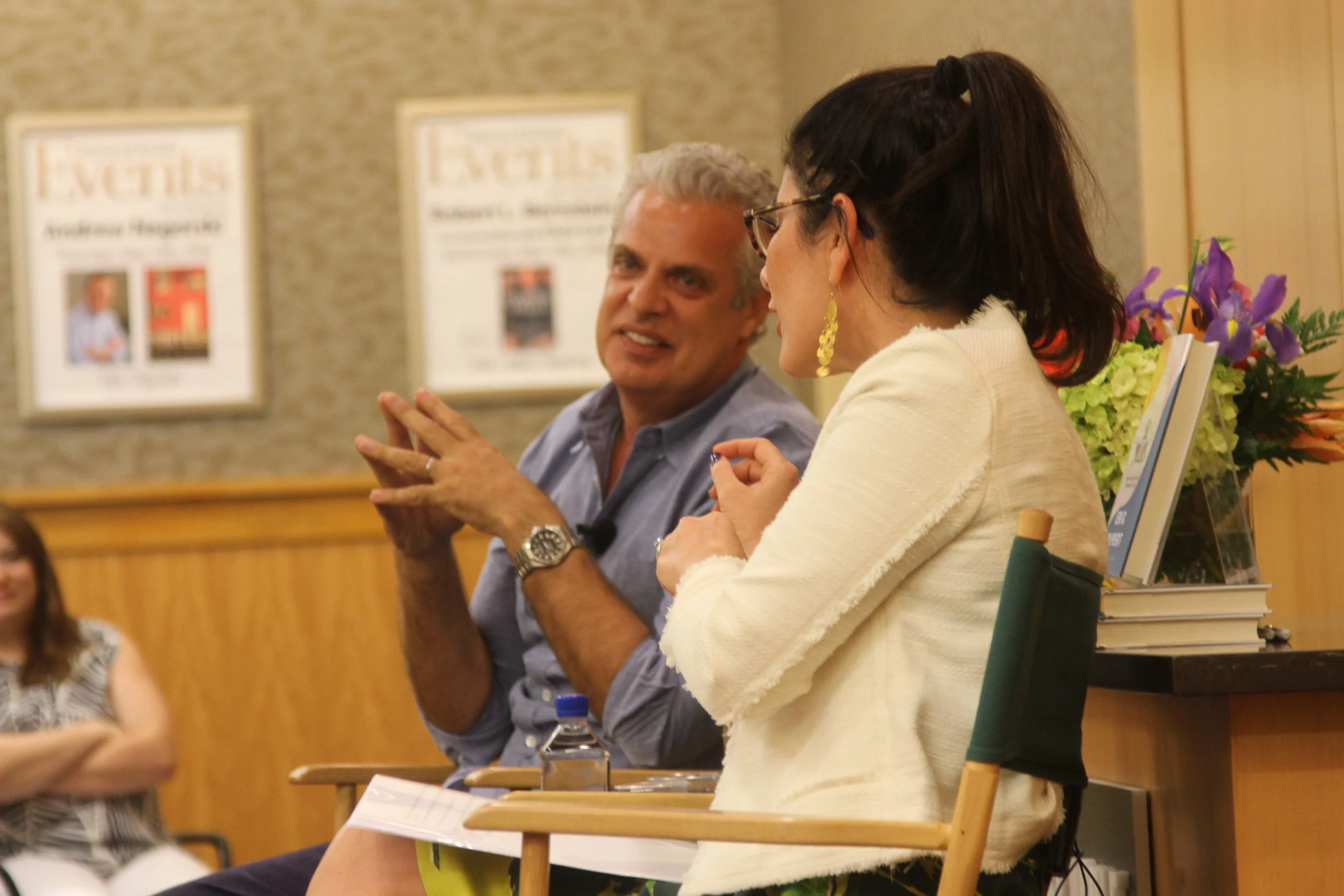Christopher Kimball @ the Strand
Last night, Christopher Kimball celebrated the release of his latest book, Milk Street: the New Home Cooking, with a talk in the Strand’s Rare Book Room. Kimball was a co-founder of America’s Test Kitchen and onetime editor of Cook’s Illustrated, so we’re very familiar with his past work, but less so with his new company. It’s a big platform – in addition to the book there’s a cooking school, tv show, magazine, radio, and he seemed to hint at sourcing/selling ingredients and maybe travel tours in their future.
Kimball is a writer known for folksy New England Americana, but Milk Street has a very global outlook. “For a lot of the 21st century, we’ve been cooking in the 19th. American cooking has been very Northern European centric, taking bland ingredients and transforming them with a lot of technique and time. But a lot of the world doesn’t cook that way. Northern Europe doesn’t use a lot of spice, and no chilies. Other people start with big flavors.”
It’s seemingly a new style for him. Someone points out that his tastes have seemed to change over time – after years of being on PBS and a monthly magazine, fans know what he likes and doesn’t, or at least they think they do. “I still don’t like recipes that are overwhelmingly hot,” he said. “But in most of the world that’s not what they do – they add char, or bitterness, or a little sweetness. The heat is balanced and moderated - I like balance.”
“We’re at a point in the culture where people want to be part of what they’re excited about, and this is how I cook now, this is what I love to do now.” It’s also a canny re-brand, since so much of ATC is about finding and refining perfect techniques.
“If you start out with a lot of flavor, you don’t need as much time and technique. Big, bold flavors are relatively easy if you start with big, bold flavors.” One example he mentioned was how Middle Eastern and Iranian recipes will often call for two cups of herbs, not the measly one sprig of thyme you’ll find in classical French cooking.
One similarity with Milk Street is that it is still focused on what home cooks are doing, not restaurant chefs. The idea was, “let’s go around the world, cook with a lot of home cooks, and see what we can bring home.” Of course, there’s a lot of editing needed. “We always look for a recipe you can make on a Tuesday night. Does it make sense for the American home kitchen? When you travel, only 10-15% of dishes will really work for Americans. It’s less about the palate, but more about the cooking methods and implements.” He points out that he can’t ask his audience to rig up a whole-chicken steamer on top of a soup pot as they do in Chiang Mai, but other dishes like fried rice and hummus can be recreated exactly the way they’re cooked abroad. “It’s not at all about dumbing it down but making an idea approachable.”
It’s also much easier these days to get exotic spices and spice mixes anywhere in the States. To lessen the kitchen impact and keep them from going bad, Kimball recommends buying spices in the smallest quantity you can, especially spice mixes like dukkah that contain nuts – those will go rancid quickly.
Lastly, he reminds us that no matter what kind of food you’re cooking, not much is really new – “I’ve thought I’ve invented a lot of dishes over my career, but then I realize I’m an idiot and it’s been around for 5000 years.”
One such classic that he mentioned during the talk was a paprika-laden “end of the month” soup from Jose Andres that he’d recently written about, and the recipe is below.
make this one thing:
Jose Andres' Sopa de Ajo
"Garlic is cooked in copious olive oil over low heat for a few minutes, handfuls of thinly sliced stale bread are added, plus 3 or 4 tablespoons of good smoked paprika and water to cover. Then the pot is simmered for 10 minutes. Four or five eggs are whisked together, then stirred in off heat. Supper is served." If you take issue with the lack of measurements here, there's a more refined and tested version here in Saveur.







